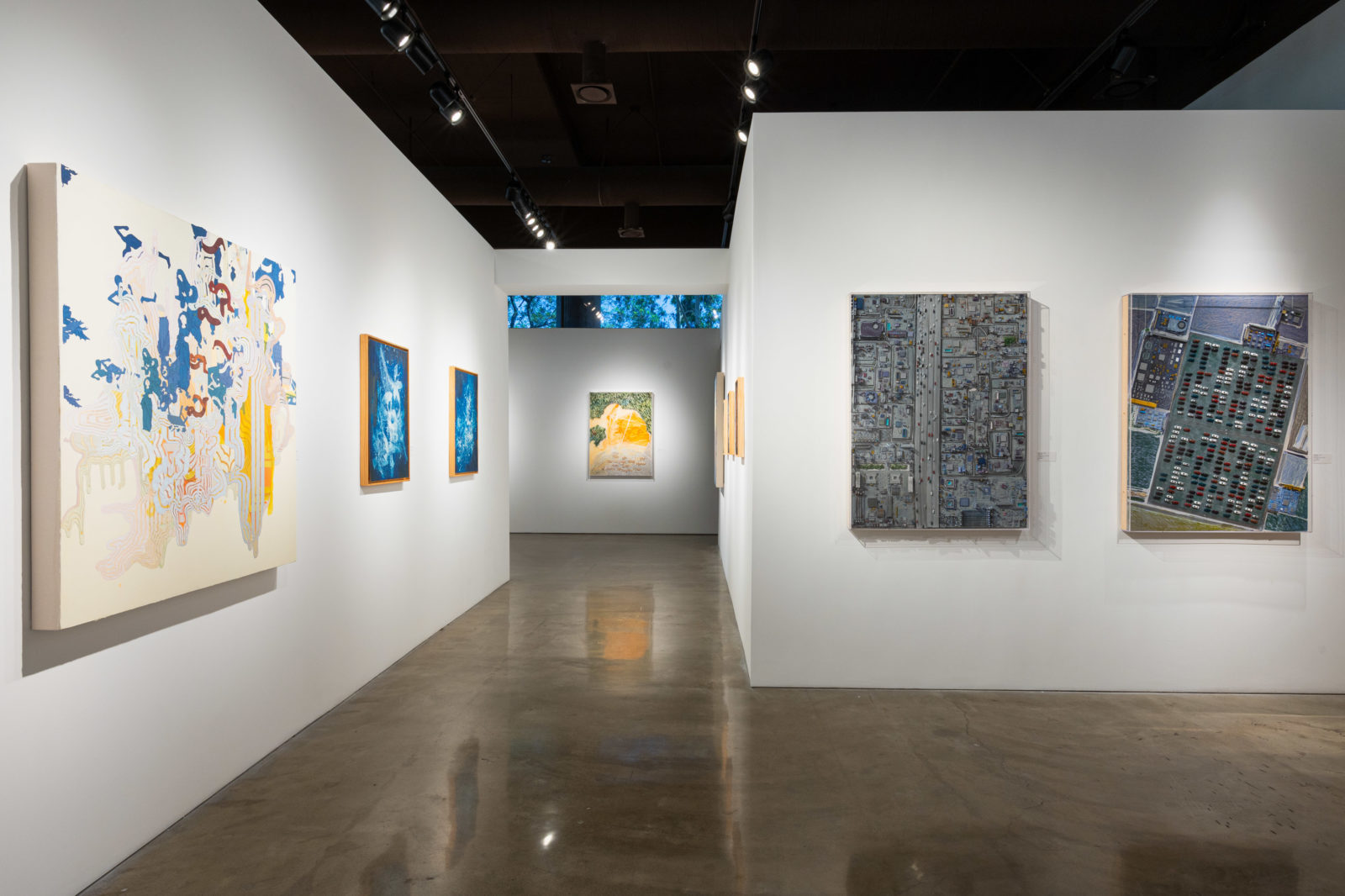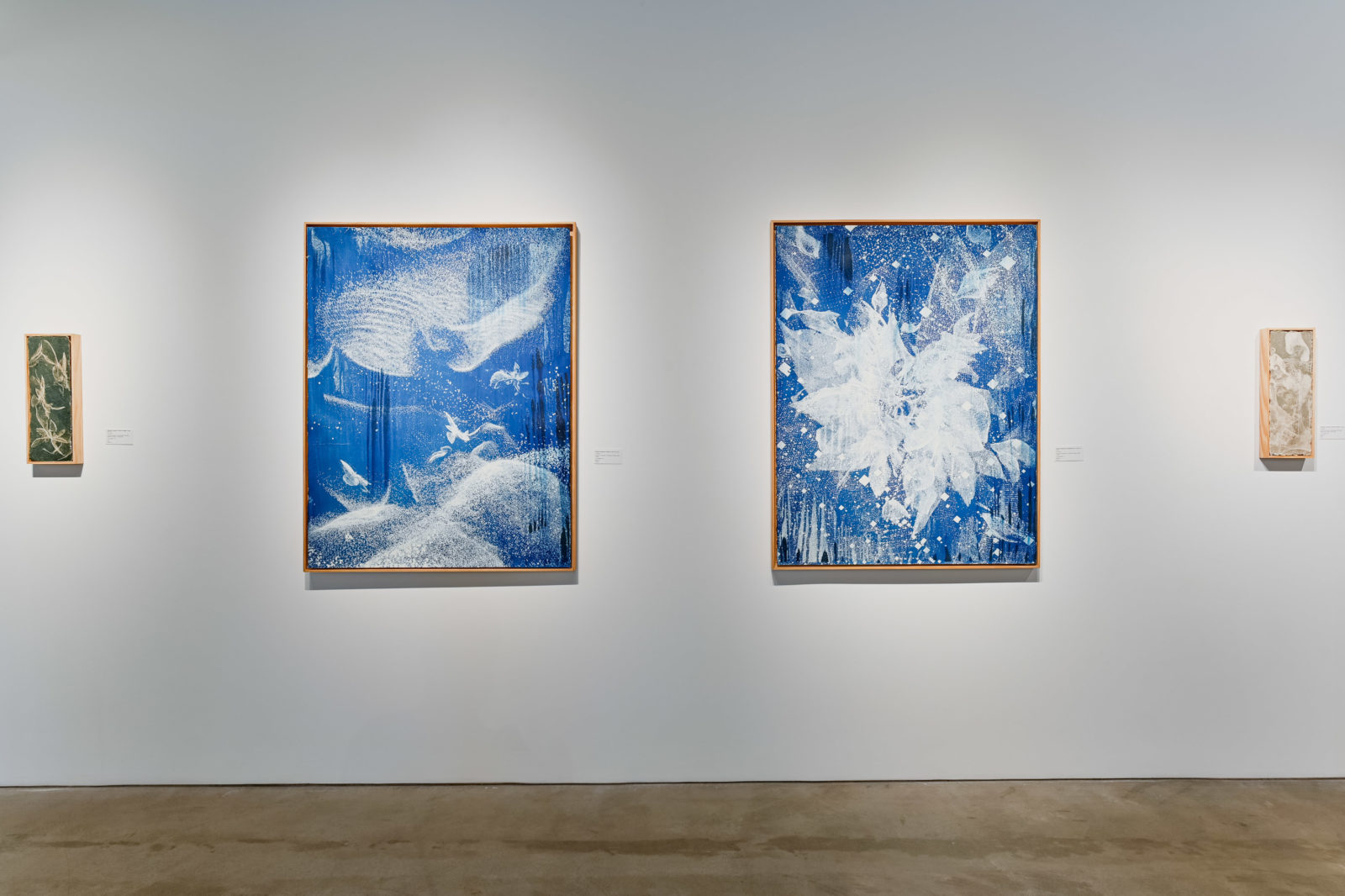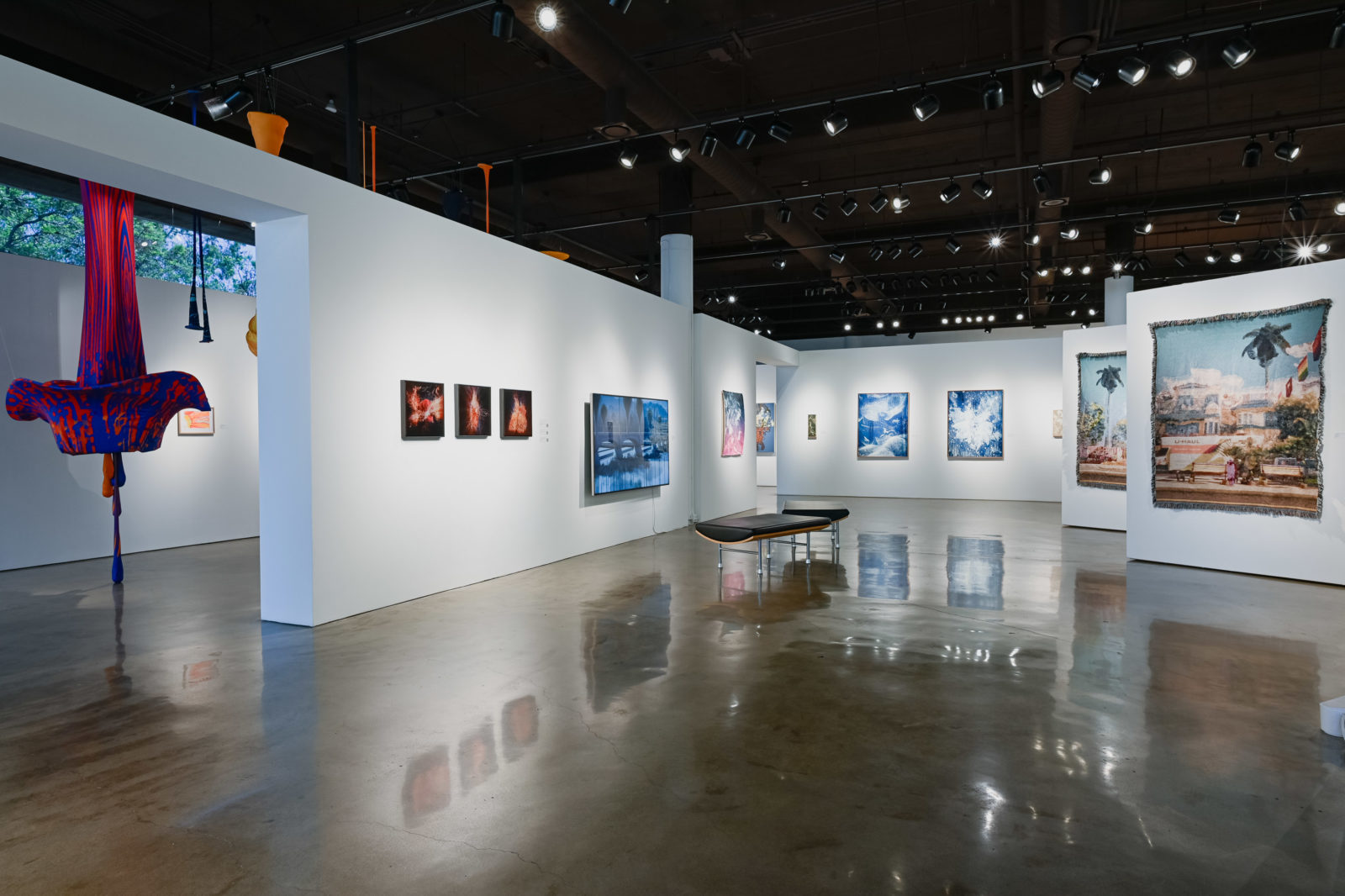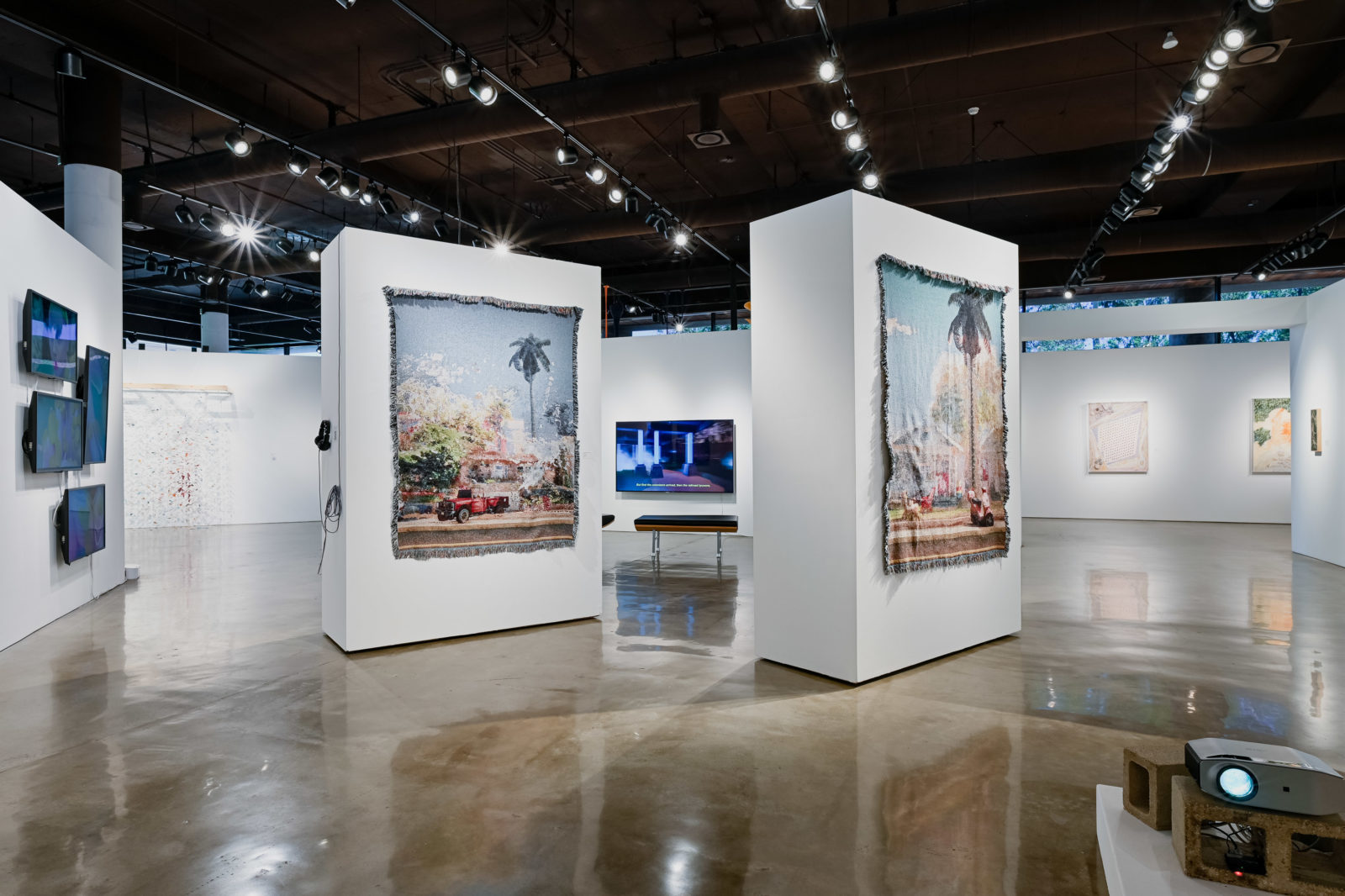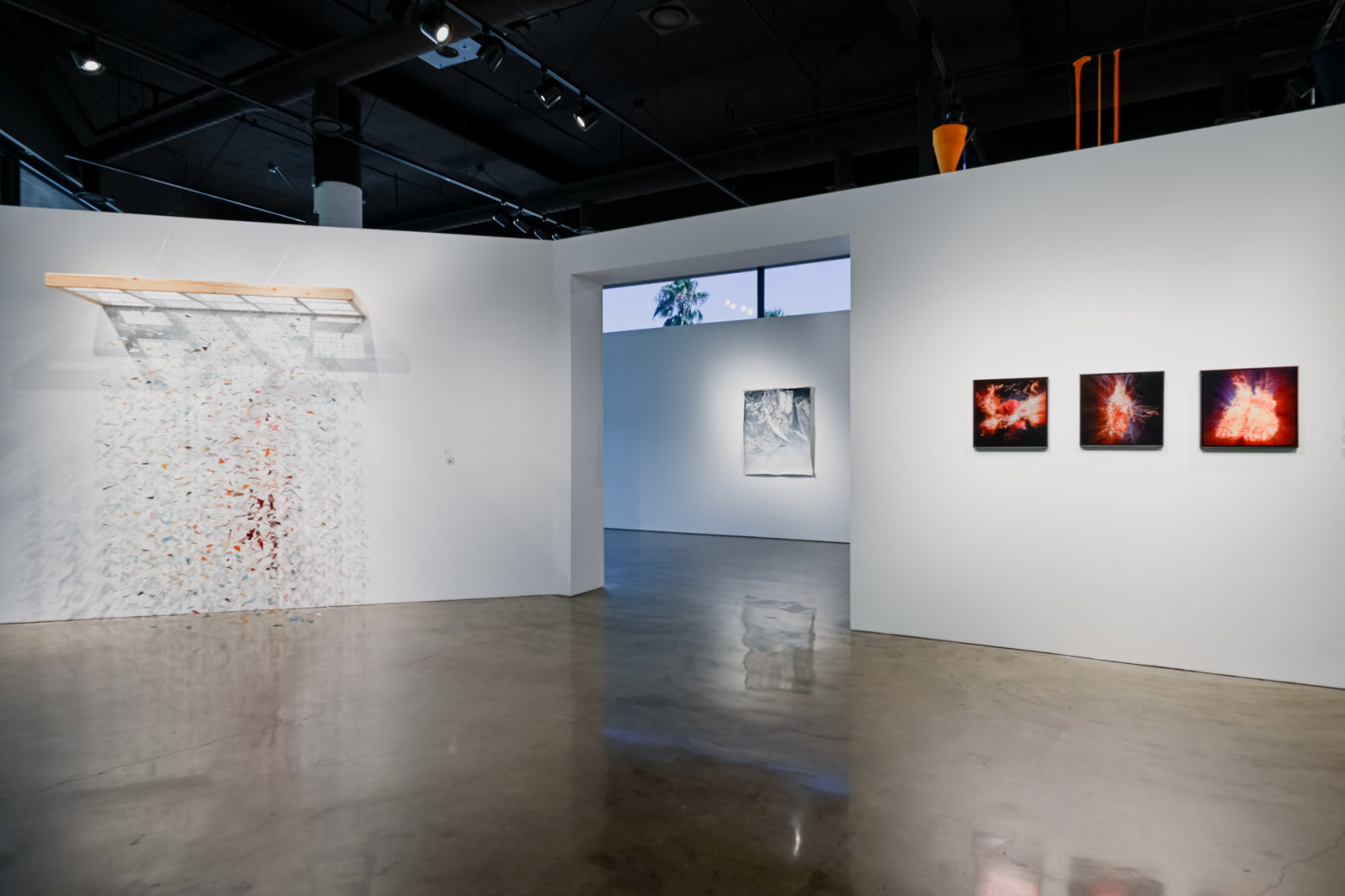Opening Reception: July 22, 5-7 pm, Free and Open to the Public
Address: Brea Gallery, 1 Civic Center Cir, Brea, CA 92821
Exhibition Run: July 22 – September 15, 2023
Artists: Alice Bucknell, Behnaz Farahi, Berfin Ataman, Eli Joteva, Isabel Beavers, Jamison Edgar, Janna Avner, Kate Parsons, Kira Xonorika, Mich Miller, Folly Feast Lab (Yara Feghali + Viviane El Kmati), Noara Quintana, Regina Teng, Richelle Ellis, Linnea Spransy, Sara Suárez, and Vita Eruhimovitz
Curated by Isabel Beavers + Naomi Stewart
Text by Alice Bucknell
“God knows inventing a universe is a complicated business,” remarks the speculative fiction author Ursula K. Le Guin in the introduction to her Haimish Universe trilogy. Known for constructing narrative worlds that hinge between past and future, utopia and dystopia, the real and the imagined, Le Guin’s words and worlds have become a cornerstone reference within a new strain of art practice that leverages emergent technologies, new ways of seeing, ancient knowledge systems, the politics of embodiment, and the pressing precarity of the climate crisis in a generative process of world-making. This type of practice underscores the need to imagine alternatives to a future that feels like it’s already been foreclosed on.
Presented in collaboration with Brea Gallery in Brea, CA, No Song Unsung offers a constellation of new and in-progress works by sixteen artists from the SUPERCOLLIDER community. Spanning multiple media and approaches, including historical and emergent imaging techniques, queer tactics of co-creation, AI collaborations, game engines, textile, painting, sculpture, and wearable technologies, these projects are united by their shared engagement in worlding practices: or the collaborative development of possible worlds merging multispecies, ecological, and machinic intelligence.

Systems thinking is a core approach to worlding; toggling across scale, time, and relationships, many of the works included in No Song Unsung examine the politics and possibilities of historical and alternative systems. In Meeting the Universe Halfway, physicist Karen Barad suggests that systems are less a stack of discrete components than a web of enmeshed forces constantly interacting and influencing each other. This interpretation can be seen across the work of Berfin Ataman, Eli Joteva, and Sara Suárez, whose works examine the architectural and visionary influence of systems on human and nonhuman worlds, as well as the possibility of co-creative alternative states of being beyond these systems.
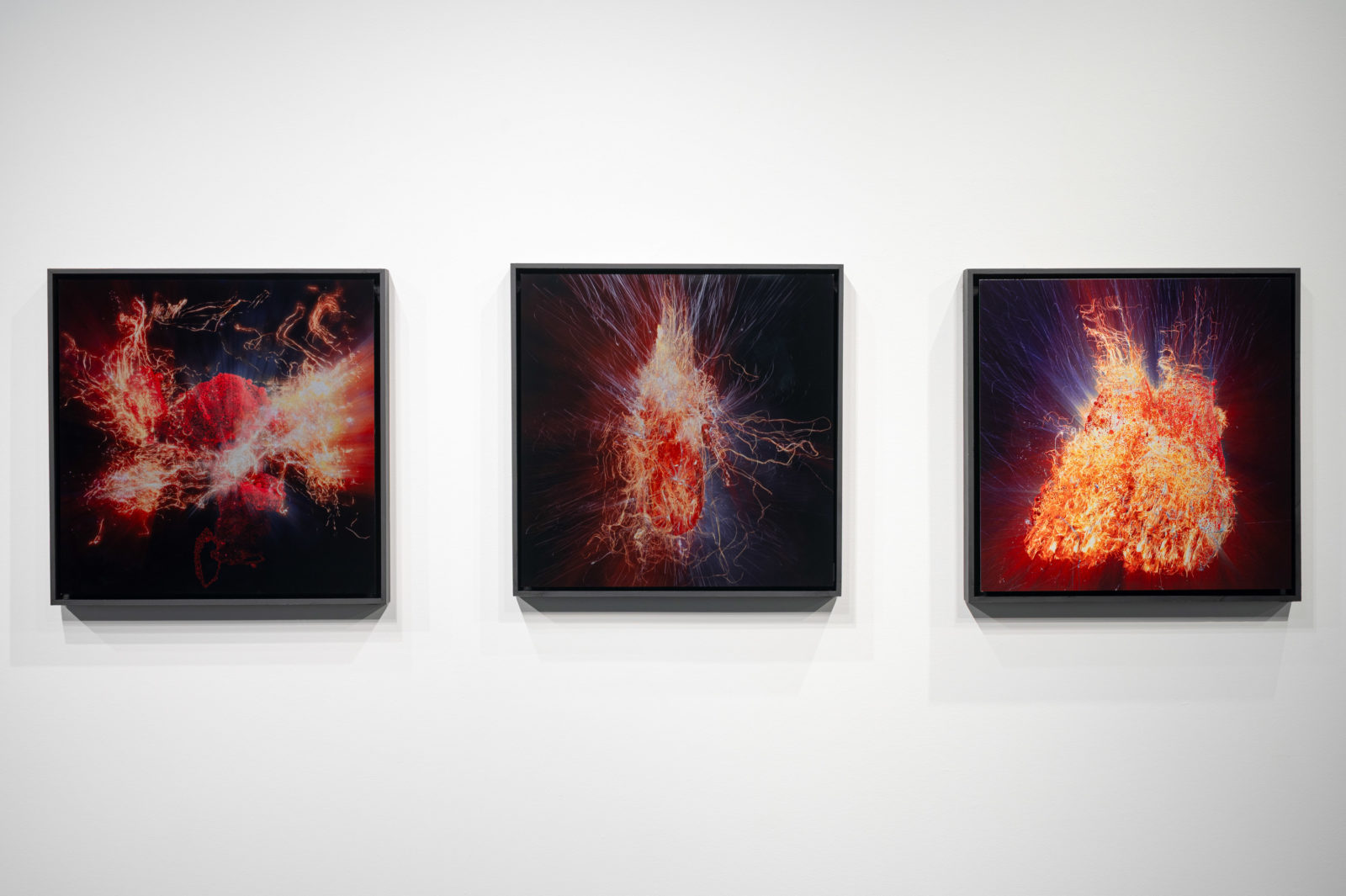
In Ataman’s practice, the artist leverages electronics, mechanical systems, and visual elements through sculptural design to create complex meta-systems that critique and expose how such structures shape our relationship to the world. Meanwhile, Joteva collapses multiple eras and scales of imaging techniques to explore the possibilities of capturing organic structures outside the visible spectrum of light from the vegetal to the human. Her ongoing Biogram Blueprints series spans novel 3D imaging technologies as well as historical methods of photographic imaging to ask what fails to be captured through these technologies. Her series Intrabeing mythologizes the human body, using MRI scans of her organs to create images that evoke the divine. Finally, Suárez’s sound and video installation Gathering Tides (On Dreaming), devised in collaboration with architectural designer Regina Teng, unfurls into speculative systems beyond our conscious states through a collaborative dream-sharing and collective writing exercise.

As Jack Halberstam suggests in The Queer Art of Failure, the act of refusal—refusal to participate in hemmed-in social systems, refusal to participate in life itself—has a distinctly queer politics that destabilizes linear-progressive arcs of capitalism. In Ars Moriendi, Linnea Spransy explores a curious 15th-century text of the same name, which offered a visual manual on how to die well to a largely illiterate population. Initially rolled out to the masses through the simultaneous invention of the printing press, this ‘text’—which constituted eleven illustrations—is reinterpreted by Spransy through a doubling-down on the messy process of moveable type. The artist’s paintings cannibalize their source imagery, poking holes in Enlightenment-era and modern notions of a singular history marked by the hierarchy of the human over nonhuman worlds. Meanwhile, in Fireline 1 + 2, Kate Parsons hones in on ecological grief—echoing an idea suggested by Daisy Hildyard in The Second Body, which suggests grief as a productive process of mutual vulnerability that reveals the interconnectedness of planetary and human bodies as systems.

Within the development of alternative worlds, the political stakes and possibilities of embodiment become paramount. In Vita Eruhmovitz’s sprawling canvases, abstract color fields riddled with scratchy mark-making and frenetic swathes of paint suggest a metamorphic body that’s always on the move. Her immersive multimedia installation, Blindness examines the increasingly common use of nonlethal weapons by police to quell protest movements from Chile to the United States. The project draws a connection between the capacity for such weapons to cause permanent injuries, including blindness, and the political symbolism of this embodied violence. Finally, in the work of Jamison Edgar, Flora in Memoria embodies the celebrity of the palm tree and its coming end, a fractured symbol of immigration, labor and spectacle. We make sense of the strange strange history of the Mexican + American palms through a headdress, a construction site, and video performance. As Legacy Russell argues in Glitch Feminism, a reconstitution of the body through technology can transgress binary ways of being, transforming embodiment into an active and mutable tactic of politics and play beyond the realm of the human.

Worlding conjures the twinned possibilities of fractured temporalities and inverted protagonist-backdrop relationships. As Ursula K. Le Guin shows us in The Carrier Bag Theory of Fiction, to understand storytelling as an infinitely mutable container for new worlds disrupts the “linear, progressive, Time’s-(killing)-arrow mode of the Techno-Heroic.” Likewise, an emphasis on more-than-human intelligence can explode historical distinctions between human and environment, self and world, as Elvia Wilk suggests in Death by Landscape. Janna Avner and Isabel Beavers look respectively to the sky and sea to question the limits of human perception of time, light, and landscape. In Avner’s painting series Midnight Sun, the artist expands the optical and environmental implications of the Aurora Borealis, drawing on indigenous futurisms and philosophies of technology to cultivate ways of seeing that transcend the colonial gaze. Beavers, meanwhile, collapses the deep time intelligence of the Clarion Clipperton Zone, an abyssal plain within the Pacific Ocean, with the catastrophic implications of deep-sea mining, to be permitted in the region from July 2023 onwards.

In their efforts to render alternative worlds into being, many artists in No Song Unsung draw on the immersive possibilities of game engine environments as well as the poetic otherworldliness of AI collaborations. In The Alluvials, a video project and playable video game, Alice Bucknell examines the politics of drought and water scarcity in Los Angeles through the perspective of the region’s nonhuman inhabitants, including the LA River. Within their large-scale installation, Folly Feast Lab (Yara Feghali + Viviane El Kmati) combine the world-building capacities of game engines with 3D scanning technologies and AI-generated imagery to cultivate connections between culture, ecology, and queer narratives. In Kira Xonorika’s hypnotic digital paintings, the artist collaborates with AI to reimagine notions of identity, history, and culture, leveraging the porous process of AI collaborations to imagine alternative worlds imbued with multidimensional possibility.

The question of how to best represent the open-ended nature of worlding runs through No Song Unsung like a livewire. Richelle Ellis’s Earth Gaze series offers an uncanny perspective of urban and rural environments. The artist’s mixed-media application blurs boundaries between photography, sculpture, and painting; this expanded perspective offers up new avenues for relating to an ever-changing world. Finally, Noara Quintana’s rich multimedia works draw on their unexpected material combinations, examining the interconnections between architecture, tropical modernism, and ecological symbolism within the construction and evolution of Brazilian identity.
As a cross-section of world-making strategies, No Song Unsung showcases the hybrid practices of a community of artists imagining alternative systems to the present. Within these constellated works, the stakes, methods, and possibilities of worlding are explored under the framework of Donna Haraway’s concept of “sympoesis”, or “making-with”. Sympoesis is an ongoing process of cultivating relationships where the human and more-than-human merge; it is an eternal practice of becoming-with an eternal song. To acknowledge the open-ended nature of worlding is to lean into its possibilities as an infinitely mutable, collective practice—a shout of refusal against the death-drive of the Anthropocene, which predicts the end of the world in all its fatalistic fervor. As the philosopher Federico Campagna has pointed out, with the end of one world begins another, to storytell is to engage in a constant practice of continuing this cycle, of opening up the possibilities of a shared future through narrative co-creation. As Le Guin suggests in the final sentences of her mythic Carrier Bag: “Still there are seeds to be gathered and room in the bag of stars.”
Brea Gallery
breaartgallery.com
1 Civic Center Circle, Brea CA 92821
Hours Wednesday through Sunday noon to 5pm


